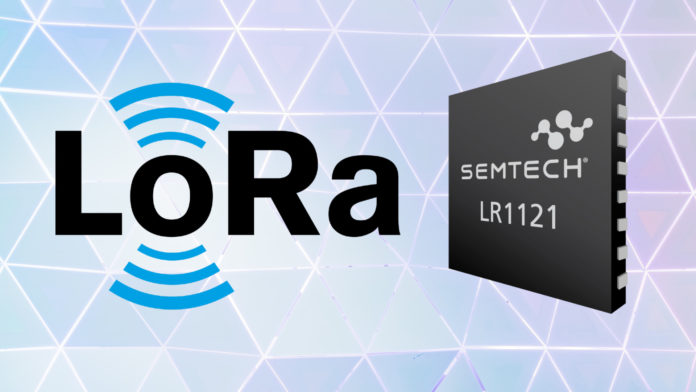Semtech has launched a new multi-band LoRa transceiver for IoT devices to support global spectrum bands and lower power consumption. The new LR1121 transceiver delivers terrestrial low-power wide-area (LPWA) connectivity for LoRaWAN devices operating at 470MHz, 868MHz and 915MHz, and for LoRa devices running at 2.4GHz and also connecting to satellites on the licensed S-band between 1.9 and 2.2 GHz.
The LR1121 (full name: LoRa Connect LR1121) is an upgrade on the LR1120, launched a year ago. The key difference with the new release appears to be its “lower power consumption”, except Semtech said little to explain the advance. Its multi-band capability, supporting its frequency hopping spread spectrum (LR-FHSS) in unlicensed sub-gigahertz and 2.4 GHz terrestrial spectrum bands, plus the satellite S band, looks equivalent to the LR1120.
But Semtech said the LR1121 transceiver has the “best LoRa transceiver RF performance to date”. It said its multi-band support means the same low-power chip can be used “anywhere in the world”. It is pin compatible with current LoRa devices. It has been picked up by module maker Murata and radio specialist Johanson Technology, which have already issued modules and reference designs, respectively, for smaller, faster, cheaper IoT solutions.
Murata’s Type 2GT module, which supports Semtech’s LR1110 and LR1120 products, is already available with a pre-certified LR1121 – as a “turnkey solution for lower cost assembly and faster time to market”. Johanson Technology’s integrated passive RF device (IPD) is also compatible with the LR1121, replacing other “RF passives” for “a smaller form factor and lower assembly costs”; a reference design is available now on the Semtech website.
Robert Comanescu, senior director of the IoT Chips Business at Semtech, said: “Semtech’s LoRa Connect is targeting the connectivity challenges faced by the industry today enabling widespread adoption and reinforcing LoRa’s position as the de-facto platform for IoT. We continue to invest to improve the LoRa technology and enrich our product portfolio with multi-band LoRa support and LoRa cloud services that will provide best in class… global IoT.”
Meanwhile, the LoRa Alliance, which shepherds the LoRaWAN standard, has launched a new accreditation scheme to validate developers and engineers. At its regional summit in Orlando (LoRaWAN Live Orlando) this week, claimed the new accreditation supports a “growing need for skilled LoRaWAN professionals in the market”. The online exam will become available on May 1; sign-up is open now. The accreditation offers a proof of qualification for LoRaWAN developers – to raise customer confidence, job security, cand career development, the alliance said.
Donna Moore, chief executive at the LoRa Alliance, said: “LoRaWAN is a mature technology with massive deployments and the largest IoT ecosystem. Over the past few years, the IoT industry has asked for a technical accreditation program to meet the growing need for skilled LoRaWAN professionals. Developers and engineers who obtain accredited professional status will bring strong knowledge of LoRaWAN to support IoT projects around the world.”

